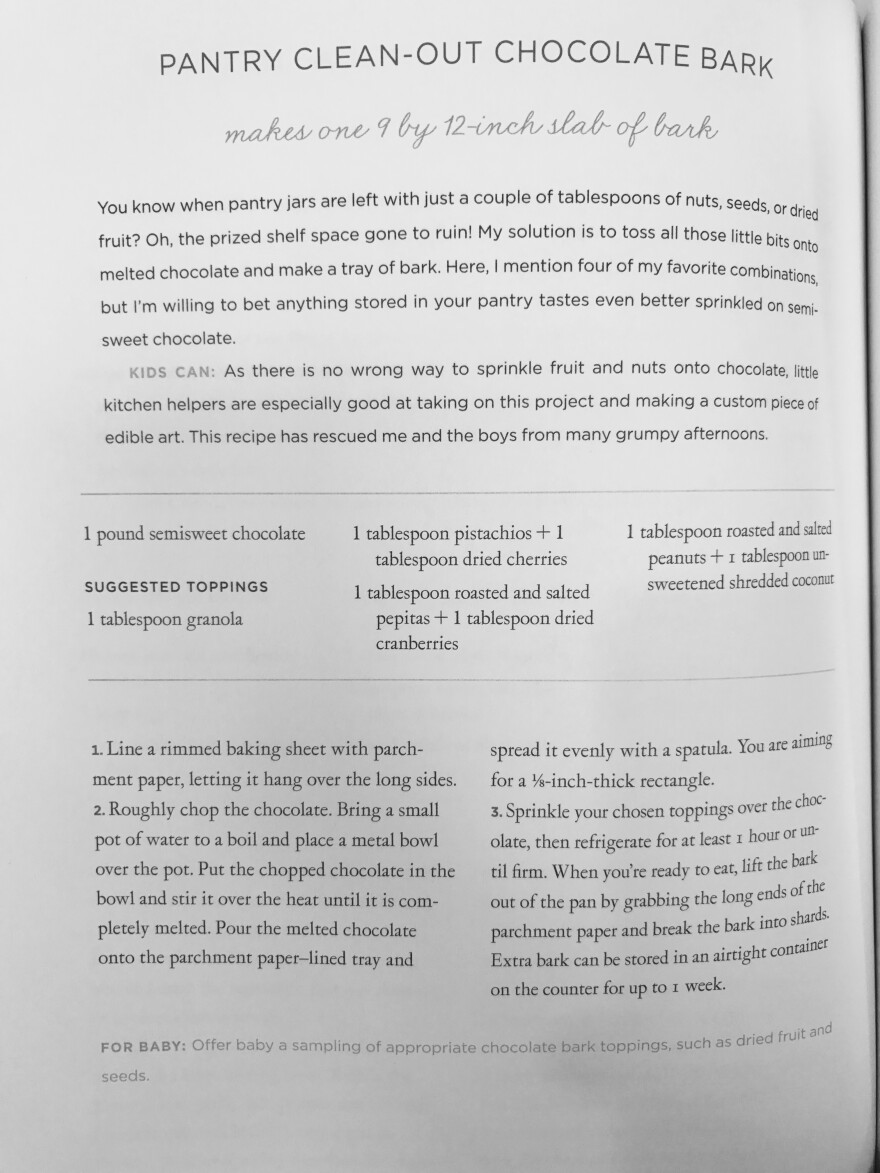Claus is a 3rd grader at the Chilmark School, and he was one of my lunch buddies. We sat together in the school’s makeshift cafeteria, in the community center next to the school. Fresh fish, pollock, was on the menu, and Claus wasn’t all that sure about it.
“I’m not much of a seafood person,” he told me. “The only seafood I’ve tried is smoked salmon, and it tasted all right. That was like three years ago, and I’ve never had it since, so it was probably just like a lucky bite.”
School lunch that day was a bit of an anomaly and more like a school lunch re-envisioned. All fifty students from the kindergarteners to the 5th graders, teachers, staff and lots of parents, came together to cook and eat a locally sourced, seasonal meal. There was plenty of time to eat, as opposed to the national average of 15 minutes. Food was served family style. Conversation was encouraged and it was a no pressure, no shame meal for the kids. If they didn’t want to try something, they didn’t have to.
This idealized school lunch began as a potential solution for an ailing lunch program that was compounded by the fact that the Chilmark School doesn’t even have its own kitchen.
“We didn’t have hot lunches here,” principal Stevens explained. “We had lunch brought in from the high school. And we really only had it on Wednesdays, when it was pizza day. So we wanted to come up with a way to have food for the kids that was cooked locally.”
So the school worked with the non-profit Island Grown Schools which is the farm-to-school program on Martha’s Vineyard. Noli Taylor was the coordinator of the program at the time and now she’s a parent at the school:
“Island Grown Schools started this event seven years ago, when the Chilmark School lunch program was not very successful,” Taylor said. “There wasn’t a lot of participation in the meals program. Students weren’t very excited about it, families weren’t very excited about it. So we tried to imagine what an ideal school lunch scenario might be, and we came up with these community lunches, where everyone sits together on a beautifully laid table—the students and their parents and community members—and we eat a meal that’s locally sourced, with lots of local seasonal ingredients that we try and keep to the cost of a school lunch.”
That cost is $2.75 for the food, though the labor is free and made up of parent volunteers, who do most of the work. But part of the deal is that every student gets experience in kitchen to make this lunch.
Here’s 5th grader Kestutis:
“Two people from each classroom at the school come and helps cook in here. I made this stuff—the black bean stuff—and that celery-and-carrots stuff.”

“The farmers in the community have been really supportive,” Taylor said. “We always bring farmers or food producers to the meal, which, again, helps build that connection between kids and the food that they eat.”
But the parents and the school quickly discovered that this was unrealistic to pull off five times a week for the school year. It was just too much work. Still everyone really enjoyed it,and they didn’t want to give up the idea so they decided instead to do four, seasonal, local lunches a year. Here’s Laina, a 5th grader reading the day’s menu:
“First Course: bean dip with crudité and tortilla chips. Second Course: Thimble Farm salad with green Morning Glory pea shoots and …mart…mart….martated (marinated) beans. Third Course creamy polenta and fishermen’s stew with…not sure what that word is…Pollock from Red’s Best. And dessert: chocolate bark with assorted toppings.”
The meal was actually delicious and a lot of fun. It felt good knowing where the food came from. But more importantly, let’s hear the reviews from around the lunch table. Starting off, Emmett, from the 2nd grade: “My favorite part is the chips and beans.”
Kestutis, again from the 5th grade, he was one of the cooks: “It’s okay, I don’t know….I only had like a carrot.”
And Laina: “I’m eating creamy polenta and fishermen’s stew with pollock.”
And my lunch buddy Claus, he remained more philosophical: “Well, you can’t expect every bite to be lucky so…”
Maybe, just a couple more lucky bites. If you really want to change things, you’ve got to keep trying (and tasting). Because, who knows, in time inspired lunches like these that are fresh, seasonal, local and cooked from scratch, they could be become the norm.
RECIPES
The parents adapted this Fishermen's Stew recipe for school lunch by baking the fish instead and then serving it on top.

Chocolate Bark recipe courtesy of Sarah Waldman, author of Feeding a Family.
Contact info:
For information on how to start your own community school lunch contactNoli Taylorat Island Grown Schools.









